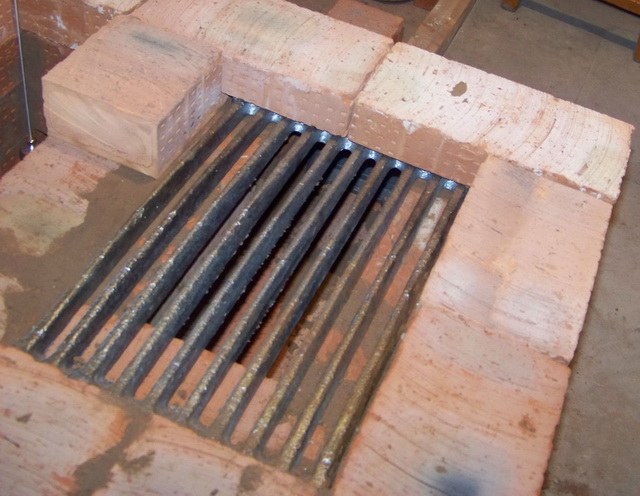Grates for domestic stoves
In domestic stoves using different fuels, including coal, which in the furnace constantly observed the area very high temperatures. The subject of combustion in the stove needs to have a position at least partially surrounded by air on top and bottom. Conventional metal grid is ill-suited to maintain fuel weight: in terms of the furnace it is quickly destroyed by corrosion, so in the furnaces it is customary to install a cast iron grate.
The grate in the furnace will perform two tasks. It provides to spill through his ash with ash and promotes the flow of oxygen in the lower part of the hearth burning. Massive cast iron is an iron alloy with a high carbon content, making it heat-resistant material with minimum values of linear thermal expansion and high resistance to oxidation.
The grate is a grate with a mesh of oblong shape and thick walls. Usually grates make the bead, while using the whole grate the whole space of the furnace is not worse. The weight of the grate is usually four to several dozen kilograms, depending on the size and expected duration of operation.
Rules of installation of the grate
The size of the grate determines the size of the furnace future furnace, so it is necessary to navigate in the first place. If the grate is purchased in advance and its size is known, the Builder can direct competently to build the brickwork and fit the size of the firebox. Typically, the grate is installed in the furnace with the possibility of replacement in the future. That is why they are not embedded in the wall, and almost freely lie on the walls of solopiano. In closed type furnaces the removal and installation of the new grate is made through the dismantling of the upper cast-iron plates, while in a furnace with a wide firebox dismantling of the grate is made without compromising the design.
Features of operation
Because cast iron is a very delicate subject, the grate can not be subjected to shocks and falls. Wiping the ash and cleaning must be done carefully, because even a medium-strength blow repeatedly perekalennoe gland can lead to cracking and a slow destruction of the lattice. The cracks in the grate should be cleaned a thin l-shaped rod, when fully cooling the furnace. Also, you can never force it to put out the furnace water: extreme temperatures are almost guaranteed to cause the destruction of the grate.
